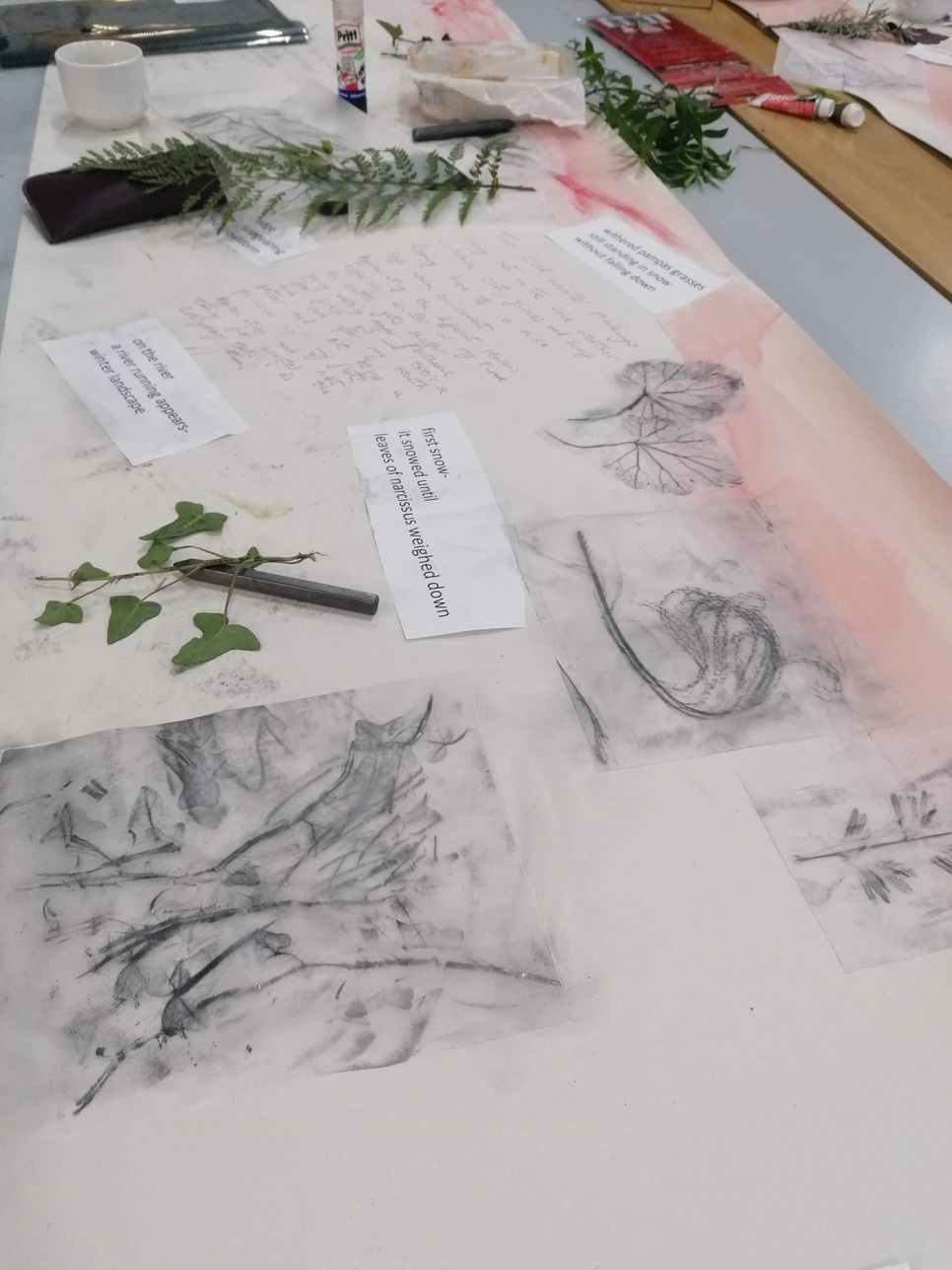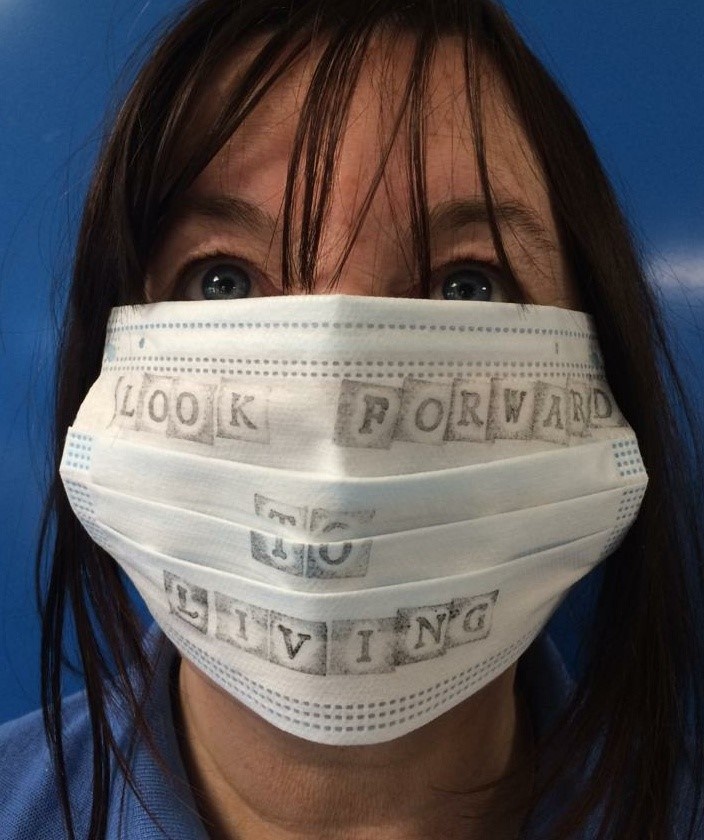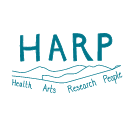Esyllt George, Arts and Health Coordinator for Cwm Taf Morgannwg University Health Board, reflects on the implementation of the multi-partnership HARP project, Seren.
When the pandemic prompted the build of a temporary field hospital in Bridgend, arts and creativity were a key element of its approach to helping older people recovering from Covid-19. Research suggests the arts can be used to heal emotional trauma, increase self-awareness, reduce symptoms and hospital stays, and offer space for social connection.
Cwm Taf Morgannwg University Health Board recognised that many patients at Ysbyty y Seren had experienced trauma and were disoriented following Covid 19 hospitalisation.
We sought to ensure patients’ emotional wellbeing was prioritised while in hospital through a programme of creative activities. We became aware we needed to build on this programme as patients transitioned home and into the community, so produced a ‘creative discharge’ plan.
This plan enabled patients to engage in creative activities initially in the hospital, which they could then continue in their communities after returning home. We proposed a series of workshops and interventions for both patients and staff at Ysbyty y Seren, which drew from a social prescription model designed to support patients’ wellbeing both in community hospitals and as they reintegrated into the community following discharge.

We partnered with Tanio, a third sector organisation providing creative activities in the local community, together with four freelance artists specialising in a range of creative mediums involving visual arts, creative writing, music, and movement for wellbeing. They were Sue Hunt, Uschi Turoczy, Glen Manby and Roisin Murphy Mortimer
Together, we planned activities and workshops for patients and staff aimed at enabling them to connect with each other both at the hospital and in the community, transforming aspects of their experiences to improve their wellbeing and enhance their quality of life.
Activities included 'music and memories' sessions by Glen Manby and some live saxophone playing in the Seren garden when weather was suitable. There were also multi-disciplinary arts workshops at the hospital Wellbeing Space. The artists created an arts wellbeing pack with Tanio based on creative interventions the patients had taken part in while at the hospital, which Tanio sent to them on their discharge.
This pack contained art resources and instructions, together with a creative evaluation tool to measure participant wellbeing pre-and post-activity.
An arts wellbeing coordinator employed by Tanio would contact participants by phone on their return to the community to enquire about their future interests and needs and to discuss the use of the wellbeing pack as a tool to aid their transition back home or into a care home environment. The discussion, which built a relationship between the individual and Tanio, would also see the coordinator suggest referrals to community groups or organisations for ongoing creative activities.
Our HARP Nourish programme also addressed an urgent need to support hospital staff during the pandemic.
We commissioned a range of artists for staff-focused projects. These included bespoke music compositions for workshops on ‘Finding hope within loss and bereavement’ composed by Harmoni Cymru and a creative activity leaflet designed by Cooked Illustrations which encouraged staff to take 10-minute breaks in nature during the day. There were also bespoke dance, movement, visual arts and creative writing sessions held both during and after the working day.

The difference creative activities have made to patients' and staff wellbeing makes any challenges worthwhile
Challenges and successes
There have been multiple learnings from the project.
Its multi-agency nature presented initial administrative challenges, as we sought to coordinate a range of people to work effectively together. This included producing data collection and consent forms, and designing processes that allowed people to be contacted by the hospital and community organisations after discharge.
Some patients went to care homes when discharged, and maintaining connections with some individuals was more challenging than envisaged. Key to all this was maintaining strong links between clinical staff, the artists in the hospital and Tanio.
The difference creative activities have made to patients' and staff wellbeing makes any challenges worthwhile.
Most participants involved in the project remarked that creative activities for wellbeing made a significant positive impact to their day and helped develop relationships with others.
Many have been keen to spread the word about their experience with others because they were feeling so much better. Nursing staff noticed positive changes in patients following taking part in creative workshops, and their social interaction improved.
Staff also commented on the positive impact the creative workshops have had on their wellbeing, and one staff participant has decided to undertake an arts and health university training course herself following her experiences.
Providing evidence for the future
Our aim is that learnings and findings from the HARP project will empower the Health Board to continue exploring the potential of arts to support patients’ health and wellbeing, including developing structures for creative social prescribing models of care.
An external evaluator is writing a report about our project’s outcomes, which will be disseminated to the Health Board and our partners.
The importance of partnerships and joint working between the Health Board, third sector organisations and artists has been documented and championed for the future.
We would like to widen our ‘creative discharge’ approach to involve more organisations and areas within Cwm Taf Morgannwg.
Given more time and resources, we would also like to include a broader network of organisations in the programme, including social services, and identify a key contact person at each organisation who would be responsible for managing communication and relationships.
In my role as Arts and Health Coordinator for the Health Board, I am now working with a GP surgery on social prescribing referrals, building primary care’s confidence in arts in the community and using my HARP project experience.
It would be great to see core funding made available annually for social prescribing in the future, to ensure continuity of care.
Seren was a multi-partnership HARP Nourish project between Cwm Taf Morgannwg University Health Board and arts partners Tanio, Sue Hunt and Uschi Turoczy.

